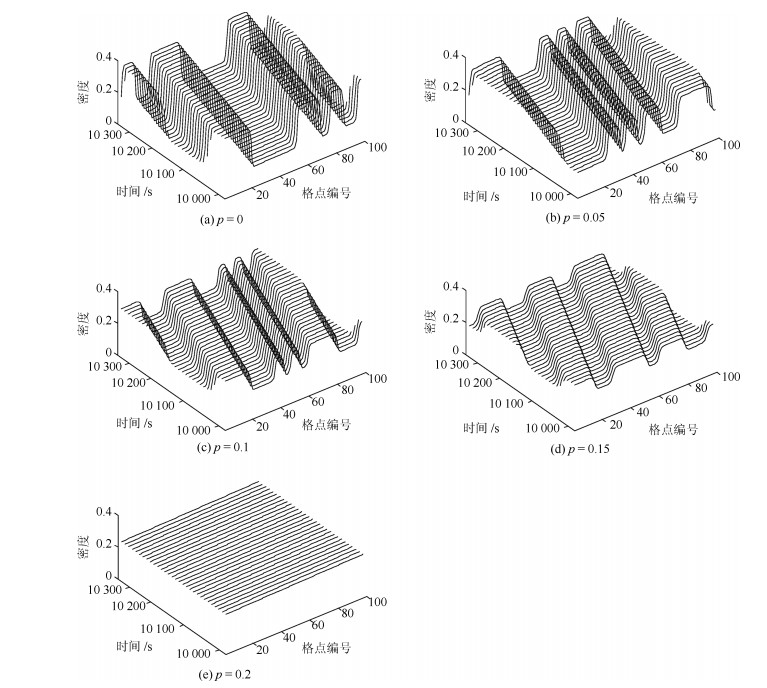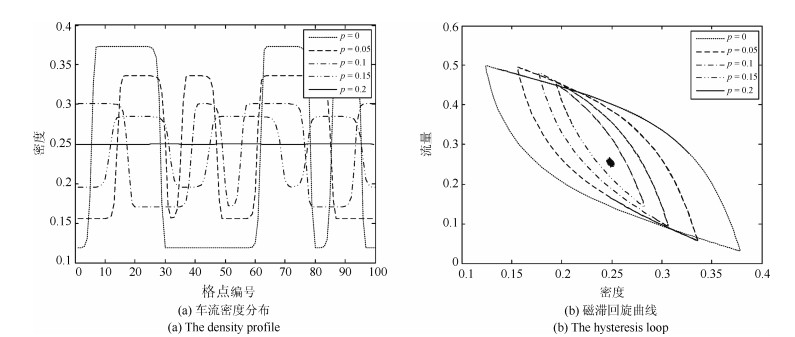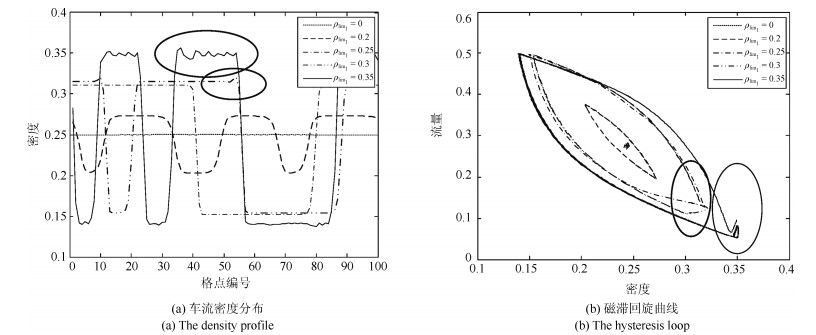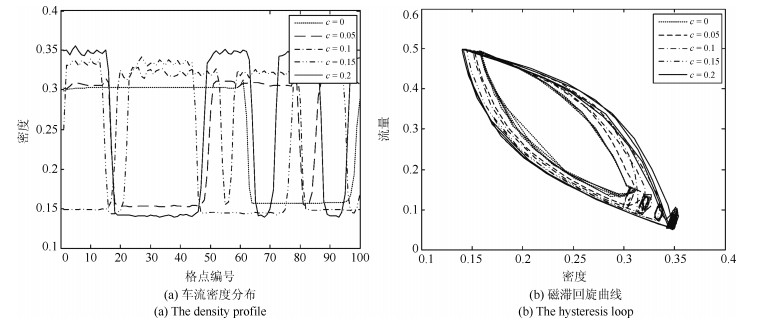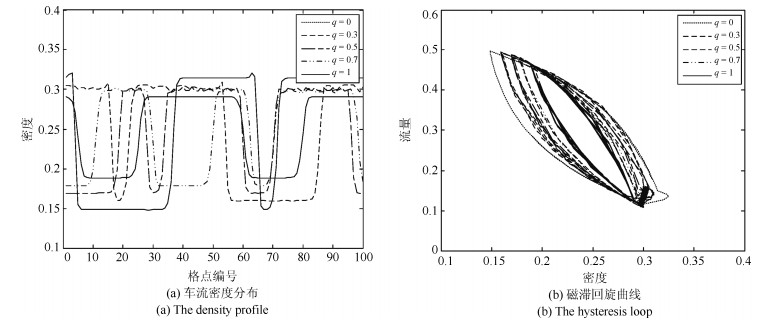|
[1]
|
Lighthill M J, Whitham G B. On kinematic waves I. Flood movement in long rivers. Proceedings of the Royal Society of London A Mathematical Physical and Engineering Sciences, 1955, 229(1178): 281-316 doi: 10.1098/rspa.1955.0088
|
|
[2]
|
Lighthill M J, Whitham G B. On kinematic waves Ⅱ. A therory of traffic flow on long crowded roads. Proceedings of the Royal Society A-Mathematical Physical and Engineering Sciences, 1955, 229(1178): 317-345
|
|
[3]
|
Richards P I. Shock waves on highway. Operations Research, 1956, 4(1): 45-51 http://www.researchgate.net/publication/224010978_Shock_waves_on_a_highway
|
|
[4]
|
吴正.高速交通中堵塞形成阶段的交通流模型.交通运输工程学报, 2003, 3(2): 61-64 doi: 10.3321/j.issn:1671-1637.2003.02.014Wu Zheng. Traffic flow modelling for jam developing procedure on expressway. Journal of Traffic and Transportation Engineering, 2003, 3(2): 61-64 doi: 10.3321/j.issn:1671-1637.2003.02.014
|
|
[5]
|
姜锐, 吴清松.一种新的交通流动力学模型.科学通报, 2000, 45(17): 1895-1899 doi: 10.3321/j.issn:0023-074X.2000.17.019Jiang Rui, Wu Qing-Song. A new traffic flow dynamics model. Chinese Science Bulletin, 2000, 45(17): 1895-1899 doi: 10.3321/j.issn:0023-074X.2000.17.019
|
|
[6]
|
夏冬雪, 李春贵.基于邻近车道车辆和多前车信息的双车道交通流动力学模型.系统工程理论与实践, 2012, 32(7): 1562-1567 doi: 10.3969/j.issn.1000-6788.2012.07.022Xia Dong-Xue, Li Chun-Gui. Hydrodynamic model for two lane traffic flow considering the information of multi-vehicles ahead and lateral vehicles. Systems Engineering - Theory and Practice, 2012, 32(7): 1562-1567 doi: 10.3969/j.issn.1000-6788.2012.07.022
|
|
[7]
|
Guo J, Jin H Z, Chen X L, Wu D J. An improved one-dimensional cellular automation model of traffic flow. In: Proceedings of the 2008 Chinese Control and Decision Conference. Yantai, China: IEEE, 2008. 4481-4485
|
|
[8]
|
Zhang Z, Ming C, Wang L. Research of longitudinal safety separation based on nagel-schreckenberg traffic flow model. Physics Procedia, 2012, 33(1): 573-579 http://www.sciencedirect.com/science/article/pii/S1875389212014198
|
|
[9]
|
张杰, 贺国光.基于一维元胞自动机模型的交通流混沌研究.武汉理工大学学报, 2009, 33(1): 33-36 doi: 10.3963/j.issn.1006-2823.2009.01.009Zhang Jie, He Guo-Guang. Study on chaos in traffic flow based on the one-dimensional cellular automation model. Journal of Wuhan University of Technology, 2009, 33(1): 33-36 doi: 10.3963/j.issn.1006-2823.2009.01.009
|
|
[10]
|
李永福, 孙棣华, 崔明月.全速度差跟驰模型的Lyapunov稳定性分析.控制理论与应用, 2010, 27(12): 1669-1673 http://www.wanfangdata.com.cn/details/detail.do?_type=perio&id=kzllyyy201012013Li Yong-Fu, Sun Di-Hua, Cui Ming-Yue. Lyapunov stability analysis for the full velocity difference car following model. Control Theory and Application, 2010, 27(12): 1669-1673 http://www.wanfangdata.com.cn/details/detail.do?_type=perio&id=kzllyyy201012013
|
|
[11]
|
吴洋, 罗霞, 刘昱岗.跟驰驾驶行为的滑模控制系统建模.控制理论与应用, 2008, 25(4): 671-676 http://www.wanfangdata.com.cn/details/detail.do?_type=perio&id=kzllyyy200804015Wu Yang, Luo Xia, Liu Yu-Gang. Sliding mode control system modeling of car following driving behavior. Control Theory and Application, 2008, 25(4): 671-676 http://www.wanfangdata.com.cn/details/detail.do?_type=perio&id=kzllyyy200804015
|
|
[12]
|
Ngoduy D. Linear stability of a generalized multi-anticipative car following model with time delays. Communications in Nonlinear Science and Numerical Simulation, 2015, 22(1-3): 420-426 doi: 10.1016/j.cnsns.2014.08.019
|
|
[13]
|
翟聪, 刘伟铭, 谭飞刚.一类耦合映射模糊时滞跟驰系统的反馈控制.华南理工大学学报, 2017, 45(1): 9-17 doi: 10.3969/j.issn.1000-565X.2017.01.002Zhai Cong, Liu Wei-Ming, Tan Fei-Gang. Feedback control of a class of coupled map fuzzy time delay car following system. Journal of South China University of Technology, 2017, 45(1): 9-17 doi: 10.3969/j.issn.1000-565X.2017.01.002
|
|
[14]
|
Nagatani T. TDGL and MKdV equations for jamming transition in the lattice models of traffic. Physica A Statistical Mechanics and Its Applications, 1999, 264(3): 581-592
|
|
[15]
|
Peng G, Liu C, Tuo M. Influence of the traffic interruption probability on traffic stability in lattice model for two-lane freeway. Physica A Statistical Mechanics and Its Applications, 2015, 436(1): 952-959 http://www.wanfangdata.com.cn/details/detail.do?_type=perio&id=24c49031af8404f8bde6e7d27bbb73f3
|
|
[16]
|
Tian J F, Yuan Z Z, Jia B. The stabilization effect of the density difference in the modified lattice hydrodynamic model of traffic flow. Physica A Statistical Mechanics and Its Applications, 2012, 391(19): 4476-4482 doi: 10.1016/j.physa.2012.04.027
|
|
[17]
|
Ge H X, Cheng R J. The "backward looking" effect in the lattice hydrodynamic model. Physica A Statistical Mechanics and Its Applications, 2008, 387(387): 6952-6958 http://www.sciencedirect.com/science/article/pii/S0378437108005220
|
|
[18]
|
Li Y, Zhang L, Zheng T, et al. Lattice hydrodynamic model based delay feedback control of vehicular traffic flow considering the effects of density change rate difference. Communications in Nonlinear Science and Numerical Simulation, 2015, 29(1-3): 224-232 doi: 10.1016/j.cnsns.2015.05.008
|
|
[19]
|
Wang Y N, Cheng R J, Ge H X. A lattice hydrodynamic model based on delayed feedback control considering the effect of flow rate difference. Physica A Statistical Mechanics and Its Applications, 2017, 479(1): 478-484 http://www.wanfangdata.com.cn/details/detail.do?_type=perio&id=68836b876df3fbc0803eb2d334c8af7e
|
|
[20]
|
Tian Y F, Jia B, Li X G. Flow difference effect in the lattice hydrodynamic model. Chinese Physics B, 2010, 19(4): 31-36
|
|
[21]
|
Tang T Q, Li C Y, Wu Y H. Impact of the honk effect on the stability of traffic flow. Physica A Statistical Mechanics and Its Applications, 2011, 390(20): 3362-3368 doi: 10.1016/j.physa.2011.05.010
|
|
[22]
|
Wen H, Rong Y, Zeng C. The effect of driver$'$s characteristics on the stability of traffic flow under honk environment. Nonlinear Dynamics, 2016, 84(3): 1517-1528 doi: 10.1007/s11071-015-2585-0
|
|
[23]
|
Kuang H, Xu Z P, Li X L. An extended car-following model accounting for the honk effect and numerical tests. Nonlinear Dynamics, 2017, 87(1): 149-157 http://www.wanfangdata.com.cn/details/detail.do?_type=perio&id=524e59944316d22f807da5fdf33fbeaf
|
|
[24]
|
Zheng L, Ma S, Zhong S. Analysis of honk effect on the traffic flow in a cellular automaton model. Physica A Statistical Mechanics and Its Applications, 2011, 390(6): 1072-1084 doi: 10.1016/j.physa.2010.11.014
|
|
[25]
|
Jia B, Jiang R, Wu Q S. Honk effect in the two-lane cellular automaton model for traffic flow. Physica A Statistical Mechanics and Its Applications, 2005, 348(3): 544-552 http://www.wanfangdata.com.cn/details/detail.do?_type=perio&id=82d9dadecd9789442049c825793ac1c6
|
|
[26]
|
Zhai C, Wu W T. An extended multi-phase lattice model with consideration of optimal current changes with memory. Cluster Computing, 2019, (22): S7447-S7457 doi: 10.1007/s10586-018-1773-3
|
|
[27]
|
Zhai C, Wu W T. Stability analysis of two-lane lattice hydrodynamic model considering lane-changing and memorial effects. Modern Physics Letters B, 2018, 32(20): 1-16 http://www.researchgate.net/publication/325968639_Stability_analysis_of_two-lane_lattice_hydrodynamic_model_considering_lane-changing_and_memorial_effects
|
|
[28]
|
潘晓东.人体信息技术在道路交通环境与安全性评价中的应用.中国公路学报, 2007, 14(1): 109-111 http://www.wanfangdata.com.cn/details/detail.do?_type=perio&id=zgglxb2001z1027Pan Xiao-Dong. The application of body information technology on road and traffic enviroment and safety evalution. China Journal of Highway and Transport, 2007, 14(1): 109-111 http://www.wanfangdata.com.cn/details/detail.do?_type=perio&id=zgglxb2001z1027
|
|
[29]
|
Golias I, Karlaftis M G. An international comparative study of self-reported driver behavior. Transportation Research Part F Psychology and Behaviour, 2001, 4(4): 243-256 doi: 10.1016/S1369-8478(01)00026-2
|
|
[30]
|
Tricot N, Sonnerat D, Popieul J C. Driving styles and traffic density diagnosis in simulated driving conditions. Intelligent Vehicle Symposium, 2002, 2(1): 298-303 http://www.wanfangdata.com.cn/details/detail.do?_type=perio&id=CC027197004
|
|
[31]
|
Sharma S. Lattice hydrodynamic modeling of two-lane traffic flow with timid and aggressive driving behavior. Physica A Statistical Mechanics and Its Applications, 2015, 421(1): 401-411 http://www.wanfangdata.com.cn/details/detail.do?_type=perio&id=be39c249063c878bfec525463eac2079
|
|
[32]
|
Peng G, Li Q. A new macro model of traffic flow by incorporating both timid and aggressive driving behaviors. Modern Physics Letters B, 2016, 30(29): 5429-5431 http://smartsearch.nstl.gov.cn/paper_detail.html?id=fa2559ae169c9c2dbfe33757c8bc49ef
|
|
[33]
|
Zhai C, Wu W T. A new car-following model considering driver$'$s characteristics and traffic jerk. Nonlinear Dynamics, 2018, 93(4): 2185-2199 doi: 10.1007/s11071-018-4318-7
|




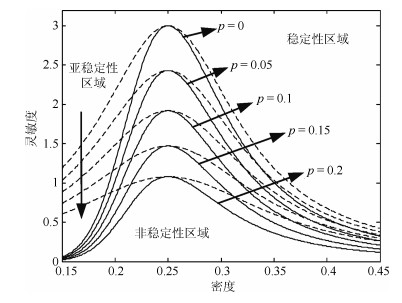
 下载:
下载:
